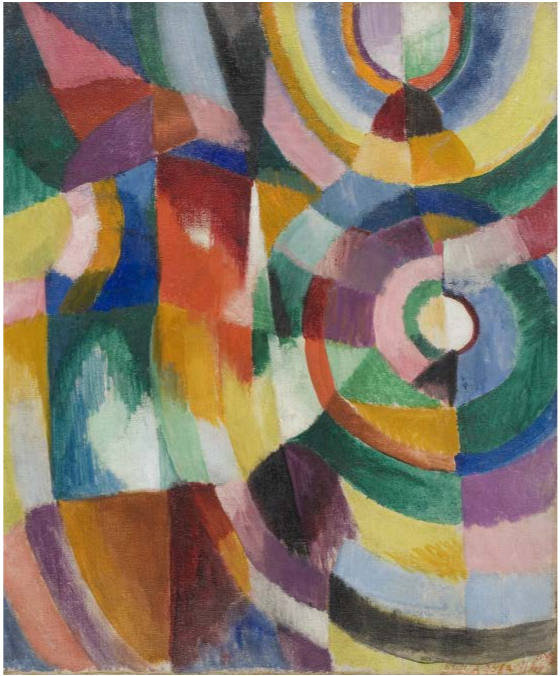Sonia Delaunay
dal 16/10/2014 al 21/2/2015
Segnalato da
16/10/2014
Sonia Delaunay
Musee d'Art Moderne de la Ville de Paris - MAM, Paris
The Colours of Abstraction. The exhibition is bringing together 3 remarkably recreated environments and over 400 works: paintings, wall decorations, gouaches, prints, fashion items and textiles. Tracing the artist's evolution since the beginning of the 20th century to the late 1970s.

curators Anne Montfort and Cécile Godefroy
For this, the first major
Sonia Delaunay retrospective in Paris since 1967, the
Musée d’Art Moderne de la Ville de Paris is bringing together three remarkably
recreated environments and over 400 works: paintings, wall decorations,
gouaches, prints, fashion items and textiles. Traci
ng the artist's evolution since
the beginning of the 20th century to the late 1970s, this monographic exhibition
highlights her work in the applied arts, her distinctive place in Europe's avant
-
garde movements and her major role as a pioneering abstraction
ist.
A generously documented chronology illustrates the richness and singularity of an
oeuvre marked by an ongoing dialogue between the arts. One feature that stands out
overall is a personal approach to colour that harks back to Sonia Delaunay's childhood
in R
ussia and her
art study years in Germany.
While Robert Delaunay was busy conceptualising abstraction as a universal language,
Sonia was testing it out in painting, posters, garments, bookbinding and household
items,
and collaborating with poet Blaise Cendr
ars on the artist's book
Prose of the
Trans
-
Siberian and of Little
Jehanne of
France.
Her Spanish and Portuguese years
during the First World War
saw
her first ventures into theatre and, before her return to
Paris in the 1920s,
commercial
fashion
design
in Madrid. The following decade
brought
a pared
-
down abstraction in the international style that harmonised with the
architecture of the time, as in the big mural decorations for the
Air Transport Pavilion at
the
International Exhibition of Art and
Technology
in Modern Life, on show here for the
first time since 1937. Her role as a "go
-
between" for the pioneers of abstraction and the
postwar generation is pointed up through her
contributions
to the
Salons des Réalités
Nouvelles, her involvement in va
rious architecture projects and her exhibitions at the
Denise René gallery in Paris: after the war her painting underwent a profound renewal,
culminating in the late 1960s in an intensely poetic form of abstraction. Her formal and
technical gifts found exression in monumental paintings, mosaics, carpets and
tapestries, and her late work
was marked by the albums of etchings she produced for
Editions Artcurial.
Also including recreations of groups and arrangements of her work, together with
photos and films
of the period, the exhibition emphasises the paradox of
an oeuvre
which, while very much of its time
—
from the Belle Epoque to the 1970s
–
remains
ageless
in its unceasing formal explorations and its quest
for a synthesis of all the arts.
The exhibition will be
on show at Tate Modern in Lond
on between 15 April and 9
August 2015.
A generously
illustrated
catalogue
of 256
pages will be published by Paris Musées to
mark the exhibition.
Image: Prismes électriques
, 1913
-
1914, ©
Pracusa 2013057
Photo Davis Museum at Wellesley College, Wellesley, MA, Gift of Mr. Theodore Racoosin
Press Officer
Maud Ohana Tel.: 01 53674051 Email: maud.ohana@paris.fr
Opening: Thursday 16 October, 6–9 pm
Press preview: Thursday 16 October, 11 am– 2 pm
Musée d’Art Moderne de la Ville de Paris
11 Avenue du Président Wilson 75116 Paris
HOURS
Open Tuesday – Sunday
10 am – 6 pm
Late opening Thursday until 10 pm (Only exhibitions)
ADMISSION
Full rate : 7 €
Concessions : 5 €
Double Ticket (Delaunay + Altmejd) : 13€ et 9,50€ (concession)



